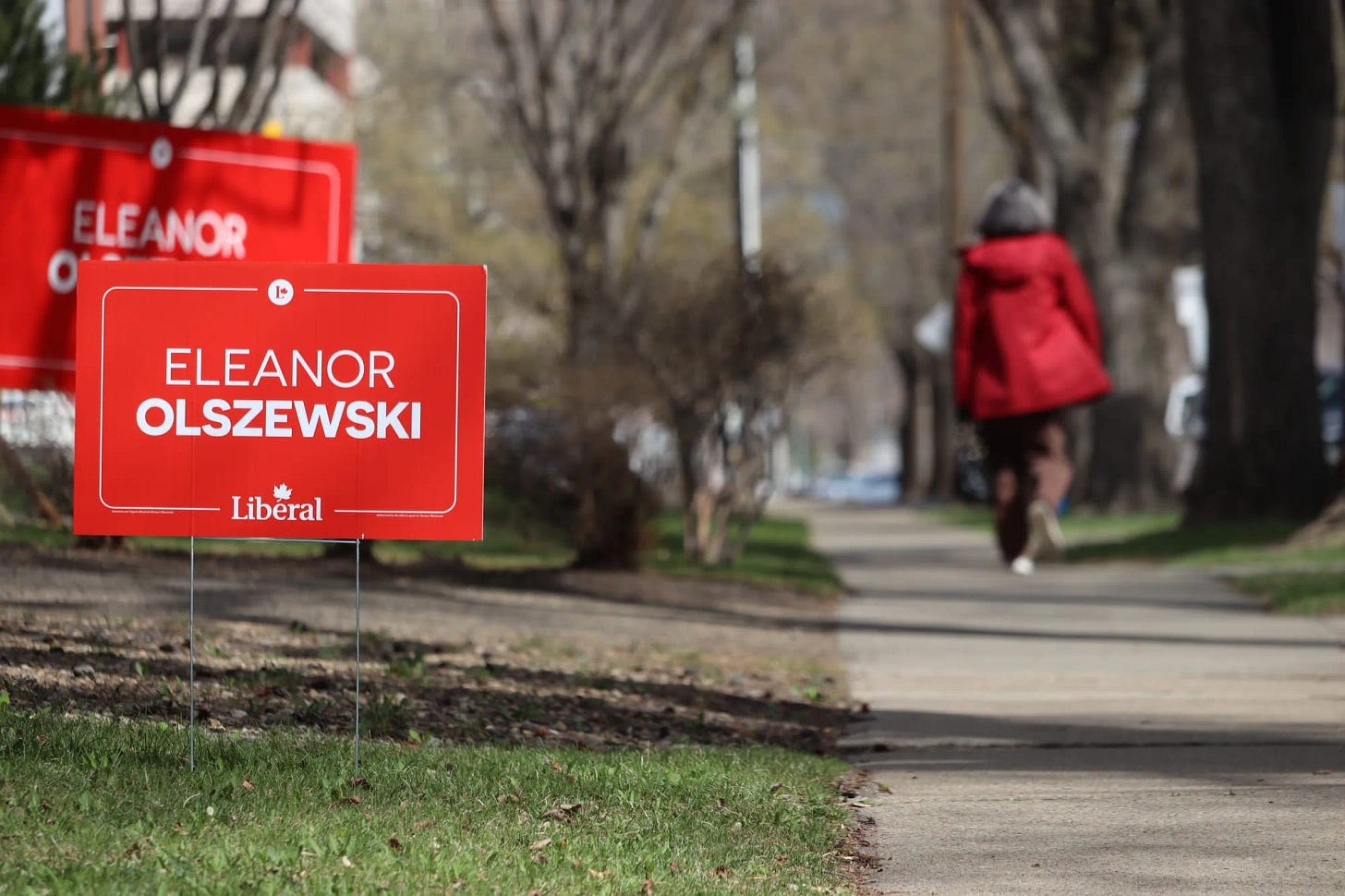With Mark Carney at the helm, Canada embarks on a new chapter—marked by sharp critiques of Trudeau and a mix of Liberal and Conservative ideas?
Also, why Conservatives lost despite the historically large popular vote.
The 2025 federal election has ushered in a new chapter for Canada. Mark Carney, long touted as a heavyweight, has stepped fully into politics and now captured the Prime Minister’s Office, signaling a decisive shift away from the Trudeau era.
Carney’s victory reflects public fatigue with Trudeau’s leadership and a growing appetite for pragmatic governance. But what’s striking is how Carney’s platform diverged from Trudeau’s—and, in key respects, borrowed from Conservative policies, recalibrating the Liberal vision.
Fiscal Policy: A Return to Discipline
A cornerstone of Carney’s campaign was to restore fiscal discipline. Trudeau’s government had leaned heavily into deficit spending, citing pandemic relief and ambitious social programs. But Carney struck a different tone, sharply criticizing what he called Trudeau’s “irresponsible approach to Canada’s finances.”
In a key debate, Carney warned:
“We cannot keep mortgaging the future of young Canadians. Fiscal discipline isn’t just good economics—it’s fairness between generations.”
Carney promised spending caps and introduced a debt-to-GDP ratio target, borrowing the Conservative idea of a “fiscal anchor” to guide responsible budgeting. This shift was welcomed by centrists and even some Conservatives who had grown frustrated with their own party’s internal divisions.
Climate Policy: Markets Over Mandates
Carney’s climate platform retained high ambitions but opted for market-driven solutions. While Trudeau had promoted government-led initiatives—and controversially purchased the Trans Mountain pipeline—Carney leaned into private capital mobilization.
In his victory speech, he stated:
“Canada’s green transition will be powered not just by government spending, but by unlocking trillions in private investment.”
He also pledged to fast-track LNG and other low-carbon resource projects, an idea lifted directly from Conservative plans, aiming to balance economic growth with emissions reduction.
Leadership Style: Technocrat over Populist
Where Trudeau thrived on charisma and progressive symbolism, Carney’s brand is rooted in technocracy and competence. He distanced himself from Trudeau’s scandals, including the SNC-Lavalin affair, saying at a major rally:
“Canadians are tired of performative politics. My government will be grounded in transparency, expertise, and results—not photo ops and empty promises.”
His early cabinet picks reflected this ethos: fewer media personalities, more seasoned policy experts.
Borrowed Ideas: The Conservative Imprint
While leading the Liberals, Carney strategically incorporated Conservative-inspired policies:
Tax relief for small businesses, extending accelerated capital cost allowances.
Stronger foreign interference laws, echoing Conservative demands for better national security.
Housing reforms, focusing on supply-side changes like relaxing zoning restrictions.
In an interview, Carney remarked:
“Good ideas don’t belong to any one party. My role is to serve Canadians, not an ideology.”
P.S. Why Did Conservatives Lose Despite Record Support?
A surprising subplot of this election was the Conservatives winning their largest-ever share of the popular vote—over 41%—yet still falling short of forming a government. Historically, such a margin would have guaranteed a majority, as seen in the Mulroney era. So, what changed?
The answer lies in strategic coordination on the left. In multiple ridings, the Greens and NDP declined to run candidates, or mounted only token campaigns, allowing the Liberals to consolidate the progressive vote. This de facto alliance revealed that the traditional boundaries between these parties have eroded, solidifying an anti-Conservative bloc.
Political analysts noted that this was a deliberate strategy to prevent vote-splitting—a quiet acknowledgment that today’s Greens and NDP are more aligned with the Liberals than at any point in recent history.
Adding to the intrigue was the latest report from The IJF (Independent Journalism Foundation):
Ottawa Unveiled Billions in Funding Days Before Election Call—Targeting Alberta Ridings
Just before the election call, Carney’s government announced $8 billion worth of new projects—the bulk of them in key Alberta battlegrounds.
These announcements, posted on Friday, March 21, and Saturday, March 22, were strategically timed in the final hours before the election writ. The IJF noted that 12 out of 17 Alberta projects landed in competitive urban ridings, suggesting a targeted effort to sway voters.
As one political science professor told IJF:
“It’s yet another example of the rules of the game tilting in favour of the governing party.”

By concentrating funds in tight races and relying on an informal left-leaning alliance, the Liberals were able to convert a slim plurality of ridings into a majority of seats—despite the Conservatives' record-breaking national support.
This election, therefore, underscored two major realities:
The first-past-the-post system can severely distort voter intent.
Canada’s left has learned to consolidate, making the path for Conservatives steeper than ever—no matter how strong their national numbers.
References:
CBC News. “Mark Carney Wins 2025 Election: What It Means for Canada.”
https://www.cbc.ca/news/politics/mark-carney-election-2025-results-1.0000000Financial Times. “Carney’s Fiscal Plan Echoes Conservative Proposals.”
https://www.ft.com/content/carney-fiscal-policy-canadaGlobe & Mail. “Carney Criticizes Trudeau’s Record: A Timeline.”
https://www.theglobeandmail.com/politics/article-mark-carney-trudeau-criticism-timelineReuters. “Canada’s Climate Future: Carney’s Vision vs. Trudeau’s Legacy.”
https://www.reuters.com/world/americas/canada-climate-policy-carney-vs-trudeau-2025-05-01The IJF. “Ottawa Unveiled Billions in Funding Days Before Election Call—Targeting Alberta Ridings.”
https://www.ijfcanada.org/stories/federal-funding-boosts-alberta-just-before-election-2025
Disclaimer:
This article's opinions are that of the author, not of any institution. It is not for legal or medical advice.
Acknowledgment:
Article is written with assistance from ChatGPT using the following prompt: WA about how the views of Carney are different from the views of Trudeau, with updates on Carney’s federal election victory, his borrowing from Conservative policies, direct quotes criticizing Trudeau, and post-election analysis including why Conservatives lost despite record support, plus funding announcements exposed by The IJF.



